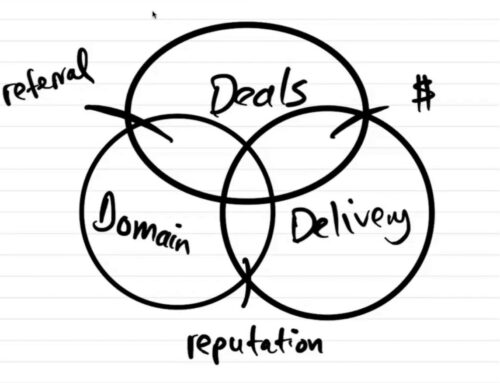Ep.102 Being CTO Of A Market Leader
Are you a technology professional looking to connect with like minded people?
We have a thriving community of CTOs discussing these episodes and more.
Click HERE to set up a call and learn more about becoming a member.
About The Speaker:
 Daniel Hindi is the CTO of Buildfire. He is also on the Forbes Tech Council. More recently, he started a YouTube channel called Cogent Step to help build the relationship between founders and their technology people.
Daniel Hindi is the CTO of Buildfire. He is also on the Forbes Tech Council. More recently, he started a YouTube channel called Cogent Step to help build the relationship between founders and their technology people.
Episode Resources:
Subscribe to Cogent Step: https://www.youtube.com/channel/UC7v7…
Check out Buildfire: https://buildfire.com/
Episode Transcription:
Nickolai: [00:00:04] Welcome back to the studio, I am your host, Nikolai Walker, of course, where else would I be? I want to toss this ball over to Etienne and have him really flush out the question that I have, which for Daniel is what’s it like to be a market leader and remain relevant in today’s market as a CTO? Etienne, you take it from here.
Etienne: [00:00:23] So at BuildFire, if you look at the next year or two, is the game, to.. I imagine that there’s this relevance game in this massive market of regulations, terms of service, having only two main players, I suppose, Google and Apple, and then to just sort of stay relevant in that space and attractive.
Etienne: [00:00:54] I think the low code approach obviously is attractive, but you’re probably competing with other providers. And then is the other thing to keep narrowing the gap of what. What can be done natively versus what can be dragged and dropped, like just keeping that feature complete? Is that the race or is that way more innovative than that? And, you know, you’re working on like Apple TV or VR glasses or all of the above. But let me try to box in the the narrative here.
Daniel Hindi: [00:01:29] So one, it was much easier early on in some aspects when we were catching up to our competitors. So we weren’t first to market and there were a few companies who tried to do this and we feel they sort of went one extreme or the other, got the ionics that did that really great. But they if you’re not a developer, it’s really not for you. And then you have the the good barbers of the world who create a beautiful system. But it’s a closed system. If the feature doesn’t exist, you can’t make it work the way you want it. It’s not an open system its a closed system. And so we we were trying to catch up to the early adopters of this type of technology. And so they sort of paved a road for us because, you know, what your competitors were doing. You start with a blank slate. It was easier to to follow that path.
Daniel Hindi: [00:02:20] And then we realized at a certain point we’ve taken the lead. And, you know, that’s arguable. And what does what does that mean is that revenues that feature set. But we realized,
Etienne: [00:02:28] No Daniel, it’s when you it’s when you look up and you look around and everyone’s behind you, that’s how you know.
Daniel Hindi: [00:02:36] Well, that’s that’s also when you also find arrows in your back, too. So when you look up and you say initially, what are what are our competitors doing, let’s be inspired by that. Right. And then be motivated to to do better or take the good, leave the bad and put your spin on it to make it better. Once you pick up one day and you say, let’s look at the next year’s roadmap and I’ve done all these features, I’ve done that you’re in the lead now. I have all these systems and features. So now it’s up to me to to come up with these new features. What is that? What is the marketplace need and then see them starting to copy, which is, you know, again, only fair. It started one way in an effort to the other. But we get to a point where you do have a constant moving target. We actually bake into our process a curve ball that Apple is going to send us every single year. We just know Apple’s going to do it. And you know that when they try to kill an entire industry with one sentence that you don’t even know if they really meant it or not. But that’s it, I am God Almighty.
Daniel Hindi: [00:03:52] I’ve said my commandments. I shall not be questioned. And it is what it is until it reached Congress. Right? But we bake it in.
Daniel Hindi: [00:04:00] It’s like production support when you’re dealing with your sprints
Nickolai: [00:04:05] And if memory serves, we covered Sprint reviews on episode ninety three with Emad Georgy
Daniel Hindi: [00:04:10] You know bugs are going to come up. You don’t know which bugs. If you know what they were you’d fix them. But you know, at a certain level you need to engage what’s in production and support it.
Nickolai: [00:04:19] And should we anticipate the unknown Daniel?
Daniel Hindi: [00:04:21] And NOT anticipating the unknown is the issue. So we actually have that for Apple and every two years for Google. But dealing with compliance and the ever stringent compliance that’s happening and then knowing that we need to provide a platform that works for everyone, simple things like two factor authentication or stringent passwords, you’ll be surprised how many customers are begging us. Please let them if they want. 1-2-3 is a password. Let them put one to three. But then if you’re exposing any data, if it’s vulnerable, am I liable as a platform? Is the customer liable? And so now you have Legal language, you have GDPR, you have CCPA, you have HIPAA compliance, PCI compliance, and so that is our job, is to make it easier for those developers developing on our system to not have to deal with all of that.
Daniel Hindi: [00:05:15] And while there is a never ending list of features that you’re playing catch up on, we’ve sort of hedged our bets there by having an open platform to say, let the community build what it needs. Right? And opening up that platform. And also with the next steps that you were alluding to, we are re-gearing the way, Buildfire works to say we’ve built this wonderful platform and we will always continue to support and build on top of this platform. But right now, most, if not all the players out there are engaging with companies saying you have a problem, which is building a mobile app. Let me help you with that problem. We want to take that one step further with Build Fire. We want to say, why are you building mobile app? Is it internal communication? Is it lead generation? Is it sales? What is it? Let’s own that metric with you.
Daniel Hindi: [00:06:05] Give me your goals, if you don’t know what they are, we will help you define those goals and own it. And let’s have this partnership where we can constantly iterate through this process and make it better and better not to make sure that at the end of the day, we have a mobile app. Its the goals set out on why you created a mobile app. Are you achieving those goals? And partnering up with companies from that level has a much stronger and more value add from a vendor perspective
Etienne: [00:06:47] almost the white glove treatment? Well, maybe not that, but it’s saying you’re building the mobile app and this is how you’ve designed it. But what is the outcome you’re looking at? And it will help you rather than say, well, I know you thought you were going to build three forms, but in our experience, it’s better to have a video and then a form and then check out something like that.
Daniel Hindi: [00:07:06] Yes. And we’ve been doing that. We’ve we consult with our customers. And at the end of the day, it’s it’s their system. Whatever they want, we will do. But we challenge them. We poke holes in their assumptions. And if it withstands our objections, then we just move forward. And if not, they appreciate the fact that they have somebody to bounce ideas off, somebody who has experience building thousands of apps that they can bring to the table as being part of that family. But generally speaking, when you engage a developer offshore, near shore, locally,
Nickolai: [00:07:39] So what is the last step in your engagement then?
Daniel Hindi: [00:07:43] The last step in your engagement is releasing the app. But we all know being CTOs, we’d all be out of jobs if that was the case. If technology was like that, we’d all be out of jobs. OK, we’ve launched good luck! You know, I have to educate my customers sometimes and say Facebook, they they’re doing pretty well for themselves. They’re all right. They have hundreds of engineers. Why don’t they all go home? What? They’re done right? No technology, stagnant technology is dead technology. And you’re just giving leeway to your competitors here. And it’s a moving target. Your user base is expectations change with time. And if you don’t keep up with it, you are going to lose by just not moving. It’s a race. It’s not. Hey, Tag, I made it past the finish line. I’m done. It’s it again. Finite game versus an infinite game.
Nickolai: [00:08:37] So can you summarize for us?
Daniel Hindi: [00:08:39] It’s keeping the ball rolling, iterating, grabbing that feedback, integrating it into the system and making sure you’re achieving your business goals.
Etienne: [00:08:48] Yeah, I’ve seen firsthand recently how a an ionic app which the startup built it and it worked fine with live video and stuff, and then they ran out of money and in the paused development. But they still use the app. And I’ve just noticed how over time it just stops working. It’s unbelievable. No one’s touching the code. But and people are using it, but over time, that’s just stops working,
Daniel Hindi: [00:09:19] So I educate my team and customers about this all the time.
Daniel Hindi: [00:09:23] The very first website ever made technically still runs. It may look horrible, but it’s still functioning the way it was designed. Day one. A mobile app developed last year doesn’t work this year.
Daniel Hindi: [00:09:40] That’s how fast things are moving and with a private entity like Apple that isn’t held accountable to anybody except their shareholders, they have the right to put any rules that they want. They have the right to force their developers to change it any which way they want. And that’s why you see some some of these legal ramifications that occur. But on the more pure sense, you are chasing a moving target and the second you stop moving is when you’re probably going to end your engagement.
Etienne: [00:10:16] So do you feel like Apple’s is in the right with the way they curate the App Store?
Daniel Hindi: [00:10:26] Are we recording this, is it turned on?
Etienne: [00:10:28] No, no, don’t worry.
Daniel Hindi: [00:10:28] So Apple, it’s it’s just to give an answer without giving an answer. Maybe it depends on how you view things.
Daniel Hindi: [00:10:38] And Google and Apple have a very easy to understand model. Google says, I’m going to let you outside of malicious intent, create whatever app you want. And if it’s garbage, nobody’s always going to buy it. Nobody’s going to download it. And it’ll just weed itself out the capitalist type market. Then you have Apple that says, no, no, you are part of the Apple family and you are in proxy representing me. So I need to hold up these standards. And my standards, by the way, change every day. And if you’d like to engage with our user base, you have to play by our ever changing rules. And so this is why you get people who are fans of Apple will come and say it’s very simple, it’s consistent, it’s unified. I get it. It works the way I want it to work. Yes, you’re right. But there’s a lot of effort and a lot of sacrifice that happens to achieve that. And at the end, it translates to why we’re paying so much for Apple products. I remember back in the days when used to build computers, you get your uncle or somebody and say, you know what, I love Apple. It’s an amazing product. It is. You know, I used to have an E machine that that just used to break down. Wait, hold on.
Daniel Hindi: [00:11:55] You’re comparing a three hundred dollar computer to a three thousand dollar computer? Well, that’s not fair. But the perception that there are marketing geniuses, you know, from a tech perspective, as CTO’s we all know, this everything that Apple talks about, oh, it’s this brand new Android had years ago. Right.
Daniel Hindi: [00:12:17] But again.
Etienne: [00:12:18] I’ll never forget when they were so proud of their virtual desktops. And I was like anyone who’s been using A3 for the last 50 years have been using Virtual desktops.
Daniel Hindi: [00:12:29] If you can’t explain your idea to your customers, if your marketing team can’t resonate that message, if your product team doesn’t understand the spirit of the problem you’re solving, it doesn’t matter.
Daniel Hindi: [00:12:43] There’s so much beautiful tech dead in some GitHub graveyard somewhere because nobody knew about it or nobody fully understood it. There wasn’t a marketing team that supported it. And so we should learn from from the experiences that are in front of us.
Daniel Hindi: [00:12:57] As it is, every department is extremely important in a business and in starting a startup. If you don’t know this, be ready to know it.
[00:13:13] Thanks again for joining us here in the studio. And thank you to Daniel Hindi, our guest today. He’s the CTO of Buildfire. He’s also on the Forbes Tech Council. More than that, he has started a YouTube channel called Cogent Step to help build the relationship between founders and their technology people. So my suggestions for you are the following: Subscribe to a cogent step at YouTube. Go check out Build Fire dot com and go check out 7CTOs Dotcom. And we will see you next time with another interview from Mr.Hindi.
Share This Story, Choose Your Platform!
Related Podcasts




